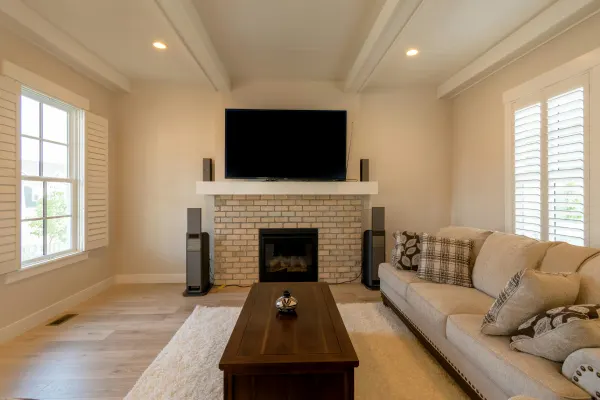
Sustainable Choices: The Environmental Impact of Hardwood vs. Engineered Hardwood
When it comes to selecting flooring, the decision between hardwood and engineered hardwood is not just about aesthetics or durability but also about the environmental impact each option presents. Both hardwood and engineered hardwood flooring have their merits in eco-friendliness, influenced by factors like sourcing, production processes, and overall sustainability. This article delves into these aspects to help you make an informed decision that aligns with your environmental values.
Understanding the Materials
Hardwood flooring is traditionally made from single pieces of wood cut from various species of trees, such as oak, maple, or cherry. The appeal of hardwood lies in its natural origin, which ensures that each plank has a unique pattern, adding timeless beauty to any space. However, the environmental impact begins with these very trees. The extraction process, typically involving clear-cutting, has significant implications for deforestation and biodiversity loss. Sustainable sourcing through certified forestry practices is crucial to mitigate these effects.
On the other hand, engineered hardwood flooring consists of a top layer of real hardwood veneer attached to multiple layers of plywood or fiberboard. The use of a veneer significantly reduces the amount of solid wood used, with the core layers often made from recycled wood fibers. This structure not only utilizes wood more efficiently but also provides an opportunity to use wood that might otherwise be discarded.
Production Processes and Energy Use
The production process for both types of flooring influences their environmental footprint. The manufacturing of engineered hardwood generally has a lower impact on deforestation due to its efficient use of wood. However, it can be more energy-intensive due to the processes involved in bonding the layers with adhesives and resins. These materials can sometimes contain volatile organic compounds (VOCs), although advancements in eco-friendly adhesives have helped reduce these emissions significantly.
All Hardwood flooring’s production is less complex in terms of manufacturing but more demanding in terms of raw material extraction. The energy used in milling and transporting solid wood planks is considerable, especially if the wood is sourced from remote forests. The sustainability of hardwood can be enhanced by sourcing wood from local, responsibly managed forests and using mills that practice energy efficiency.
Carbon Footprint and Life Cycle
Both hardwood and engineered hardwood have a carbon footprint associated with their life cycle, from tree harvesting or wood sourcing to end-of-life disposal. Hardwood floors can last for decades, even centuries, and can be sanded down and refinished multiple times, extending their life further and reducing the need for replacement. This longevity contributes positively to its environmental profile, as less frequent replacements mean reduced consumption of raw materials and waste generation.
Engineered hardwood flooring, while not typically lasting as long as solid hardwood, still offers a considerable lifespan. It can also be refinished, depending on the thickness of the top wood layer. The ability to use less desirable species of wood in the core layers that are hidden from view also helps in conserving more valuable hardwood resources for the visible top layer.
Sustainability Certifications
To assist consumers in making environmentally sound choices, certifications such as the Forest Stewardship Council (FSC) for hardwood and the Sustainable Forestry Initiative (SFI) offer guidelines and standards. These certifications ensure that the wood is sourced from forests that are managed responsibly. Products bearing these certifications are often preferred by environmentally conscious consumers.
Additionally, the Leadership in Energy and Environmental Design (LEED) certification considers the use of sustainable flooring materials in its rating system. Using FSC-certified wood or recycled materials in engineered flooring can contribute to achieving LEED points, which is a significant consideration in commercial and high-end residential constructions.
Making the Right Choice
When it comes to sustainability, there is no one-size-fits-all answer for choosing between hardwood and engineered hardwood flooring. The right choice depends on various factors, including the specific practices of the suppliers and manufacturers, the local availability of materials, and your personal sustainability goals.
For those looking to minimize their environmental impact, engineered hardwood offers an effective solution through its efficient use of wood and potential inclusion of recycled materials. For others, the longevity and renewability of hardwood might align better with their sustainability values, especially if sourced responsibly.
In conclusion, both hardwood and engineered hardwood flooring present viable options for those looking to make environmentally responsible choices. By understanding the nuances of each option’s impact on the environment, consumers can select flooring that not only meets their aesthetic and functional needs but also aligns with their ecological values. Contact us today for more information.





